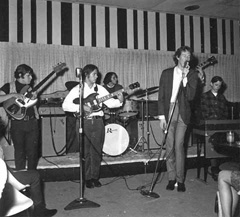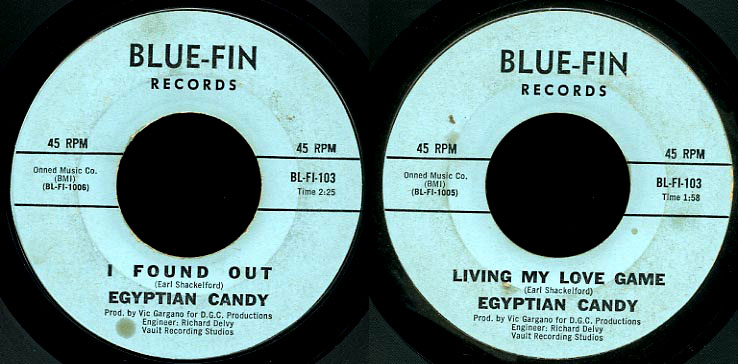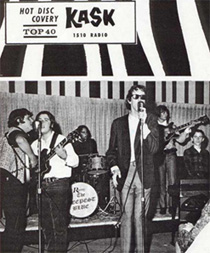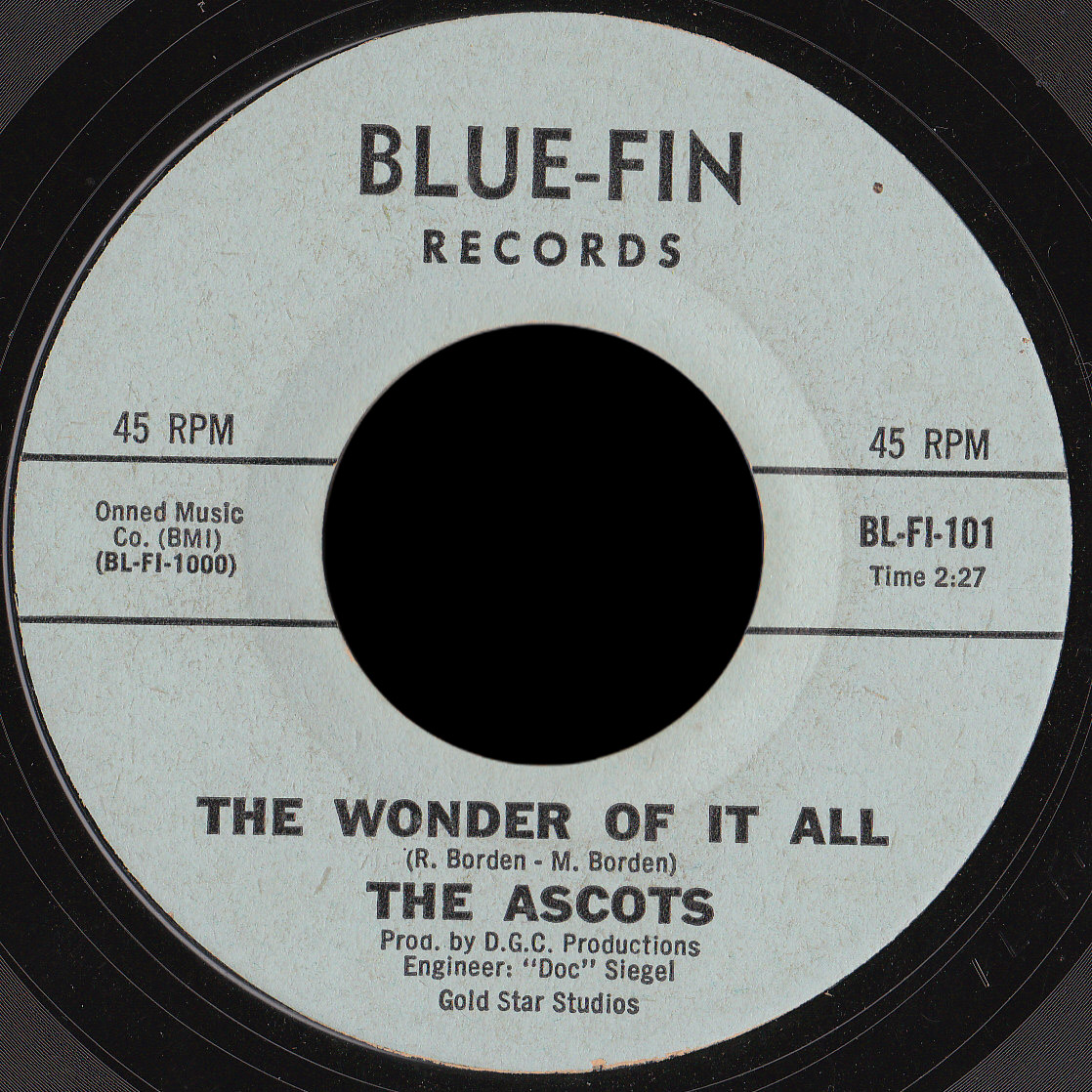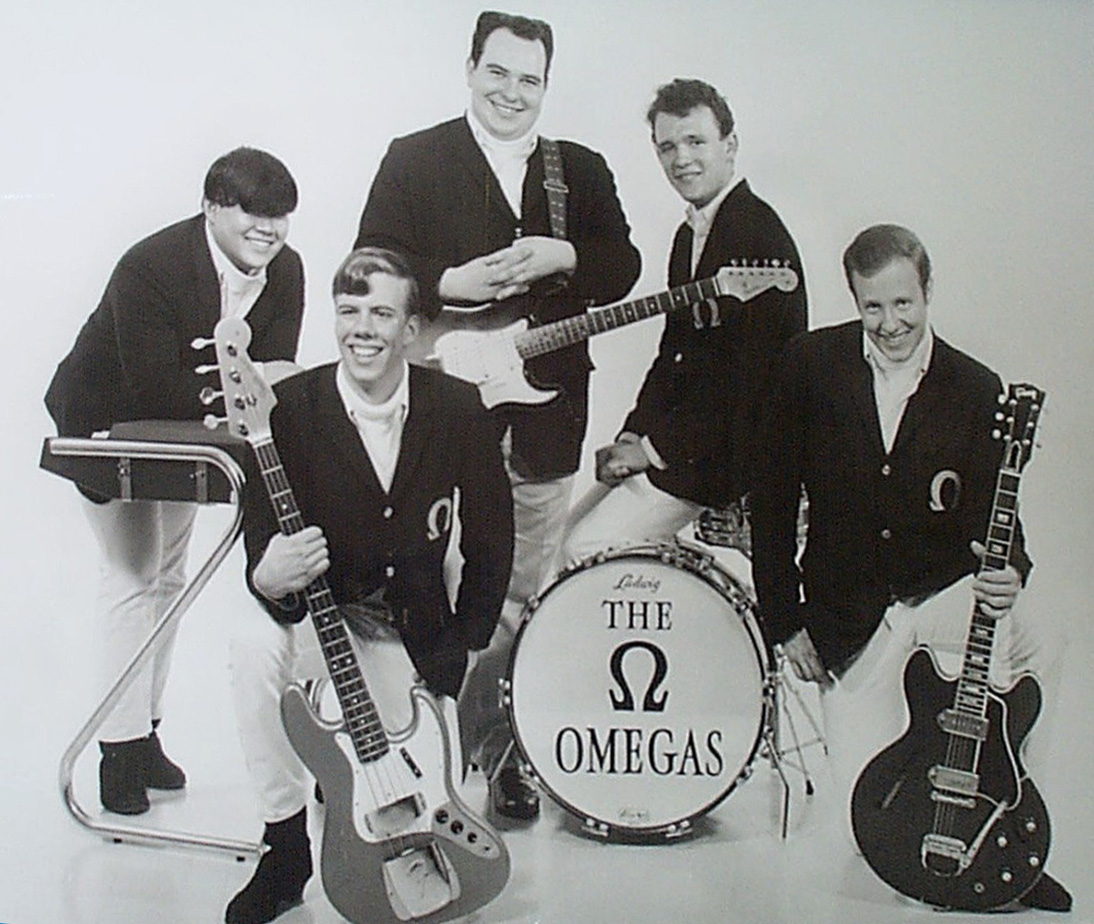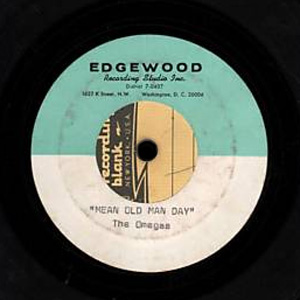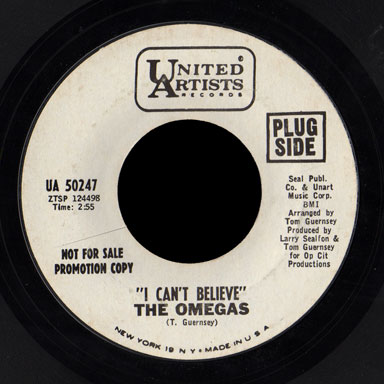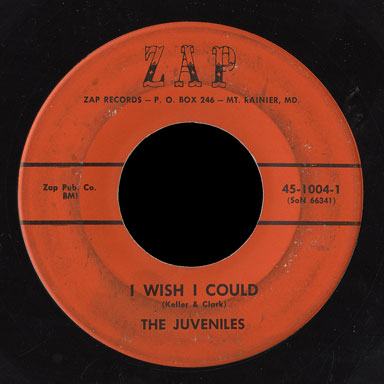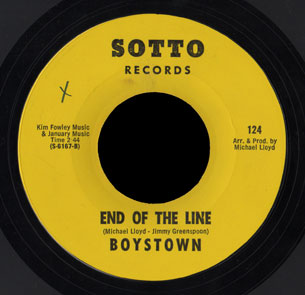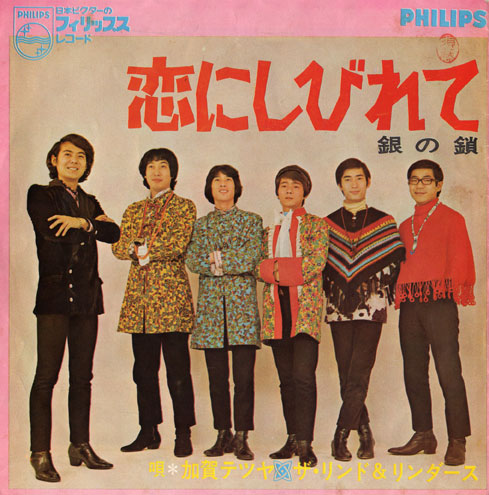There’s an interesting story behind this record by the Statesiders. The band, better known as first the Redcoats and then the Sidekicks, almost hit the big time until managerial difficulties crashed their plans.
John Sprit was the creative force behind the group. He had been in the Randells, charting with “The Martian Hop” in 1963, a record produced by John’s cousin Steven Rappaport. John Sprit decided to form a band in imitation of the Beatles, based around his songwriting. With Steven as manager and producer, John on drums and his friend Mike Burke on lead guitar, they spotted Zach and Randy Bocelle of Absecon, NJ at an audition, and brought them in to fill the ‘roles’ of John Lennon and Paul McCartney, respectively, on rhythm guitar, bass and lead vocals.
After intensive rehearsals in John Sprit’s family home in Wildwood, NJ, the Redcoats signed with Laurie for a 45 in the style of Herman’s Hermits, “The Dum Dum Song” / “Love Unreturned”, which did fairly well on a local level. It was released in October, 1965.
Prior to “The Dum Dum Song”, the Laurie subsidiary, Providence released a single by the Statesiders “She Belonged to Another” / “Patterned the Same” in the first half of 1965. The Statesiders name is an oblique reference to their being the US counterpart of the Beatles / Redcoats. The single was produced by Steve Rappaport and both songs were written by Carnaby & Shakespeare: pseudonyms for John Spirt and Michael Burke according to the BMI database. The songs have enough originality to overcome the Beatles influence, and are more than competently performed by the group.
Zach Bocelle doesn’t mention the Statesiders or either song title in his long history of the group. It’s possible the songs were recorded prior to Zach and Randy joining the band. The songs are also not included on the collection of the Redcoats’ recordings for Laurie Meet The Redcoats…Finally released by Dionysus in 2001. But I think it likely that most of the band played on this record, making it a forgotten part of pre-Redcoats history.
Things were looking up for the band when Steve Rappaport left for Europe during the summer of ’66. Looking to record more original songs on their own terms, they found a manager and investor in a wealthy woman from Philadelphia who financed their next demos.
An original of John’s, “Suspicions” caught the ear of RCA, who renamed the band the Sidekicks and re-recorded the song with a full orchestra. Released in the spring of 1966, “Suspicions” was a fair-sized national hit, and the band soon followed up with an LP of mostly very pop-oriented material.
Within a year, though, their new manager’s shameless exploitation alienated both the group and RCA, and the bitterness of the experience led John Sprit to quit the business altogether.
Thanks to Euphonic for his comment below with the approximate release date and Laurie ownership of Providence – I’ve revised this post to reflect that new info. Thanks also to Mike Markesich for the release date of the Laurie 45.


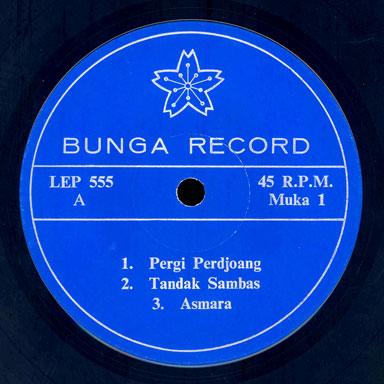
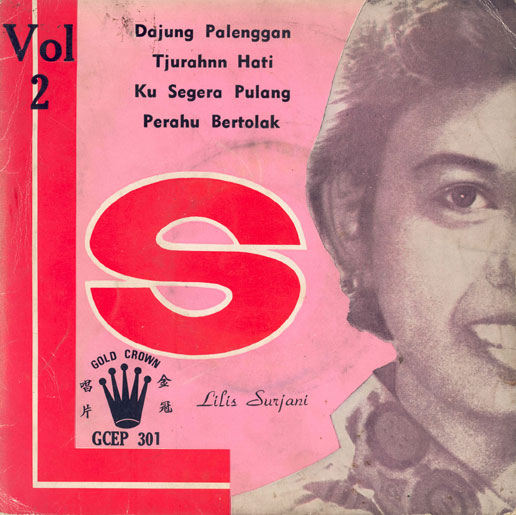
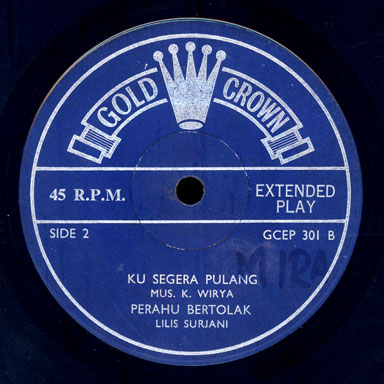
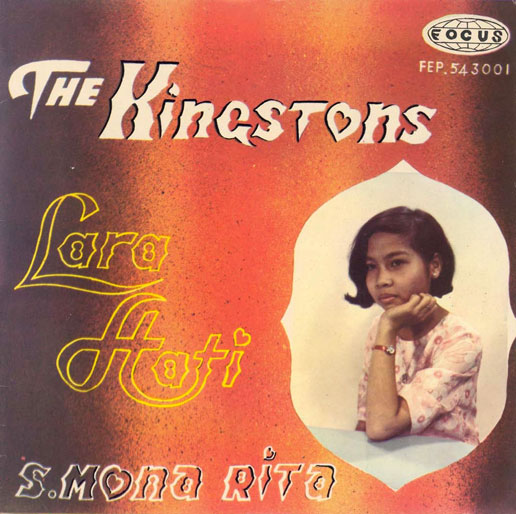
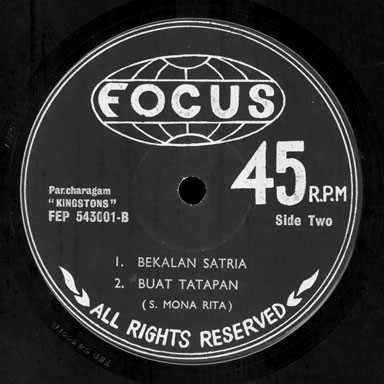

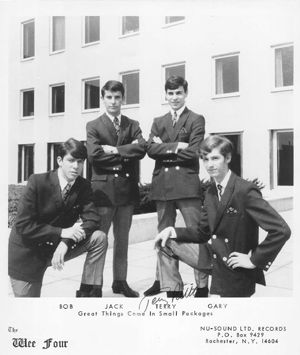
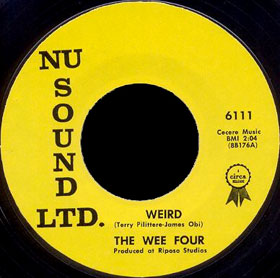 Terry Pilittere was the founder of the Rochester, NY group the Dimensions, in 1962. Members were Denny Drew lead guitar, Rob Salerno rhythm guitar, Ken Polizzi bass and vocals, and Terry on drums and vocals. In 1965 Jack Allocco joined and the band changed their name to the Wee Four, because none of the members was over 5′ 8″ tall.
Terry Pilittere was the founder of the Rochester, NY group the Dimensions, in 1962. Members were Denny Drew lead guitar, Rob Salerno rhythm guitar, Ken Polizzi bass and vocals, and Terry on drums and vocals. In 1965 Jack Allocco joined and the band changed their name to the Wee Four, because none of the members was over 5′ 8″ tall.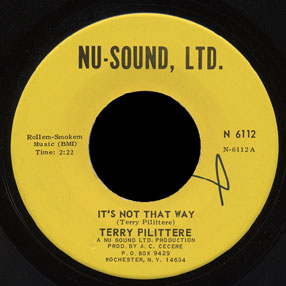 Members of the band had conflicts with manager Al Cecere, but Terry decided to leave the group and go with Al as his manager for a solo record of two beautiful original songs, “It’s Not That Way” and “You Wouldn’t Believe Me”.
Members of the band had conflicts with manager Al Cecere, but Terry decided to leave the group and go with Al as his manager for a solo record of two beautiful original songs, “It’s Not That Way” and “You Wouldn’t Believe Me”.

